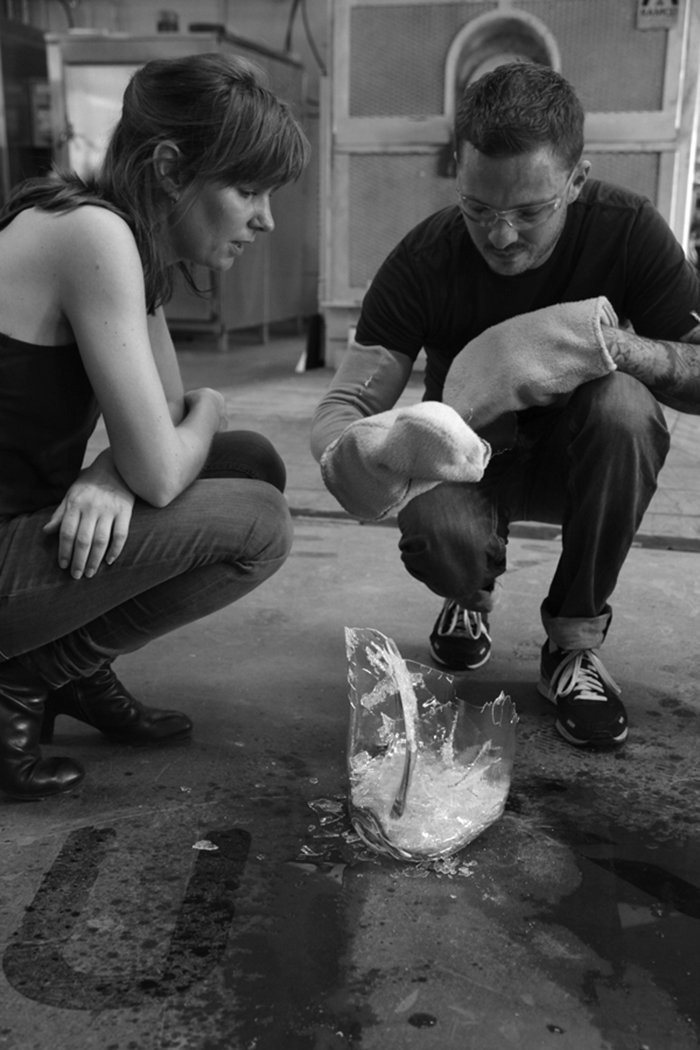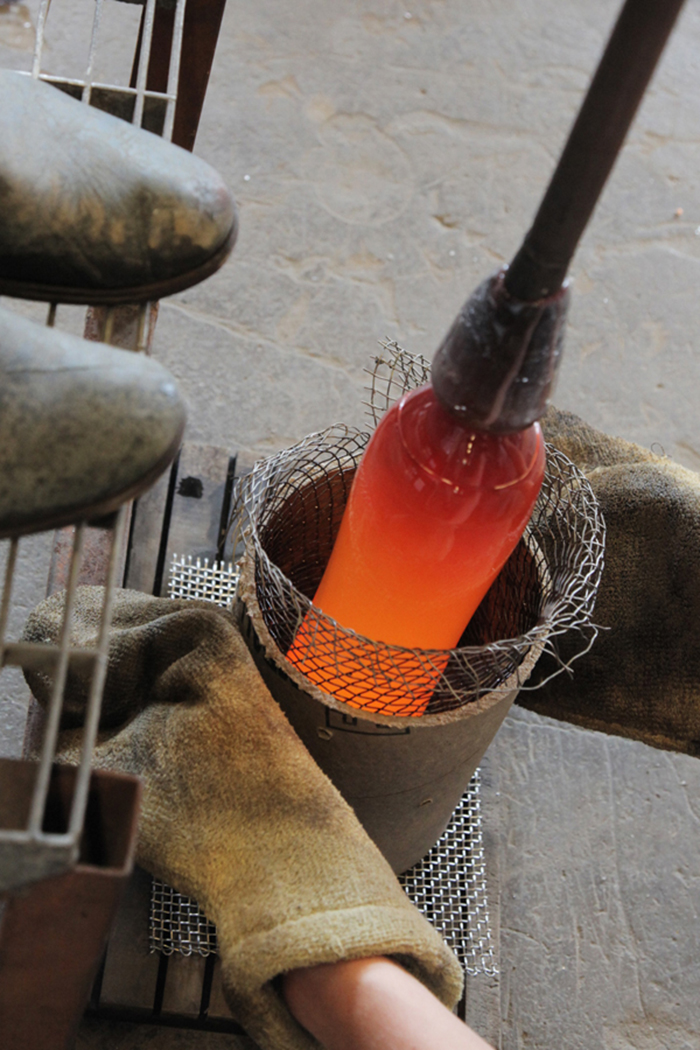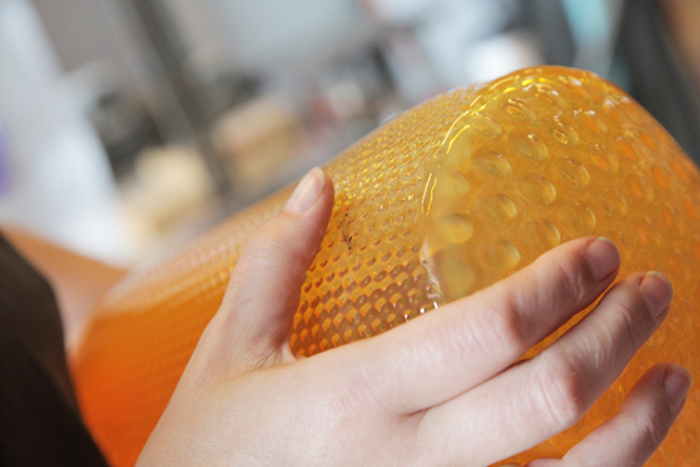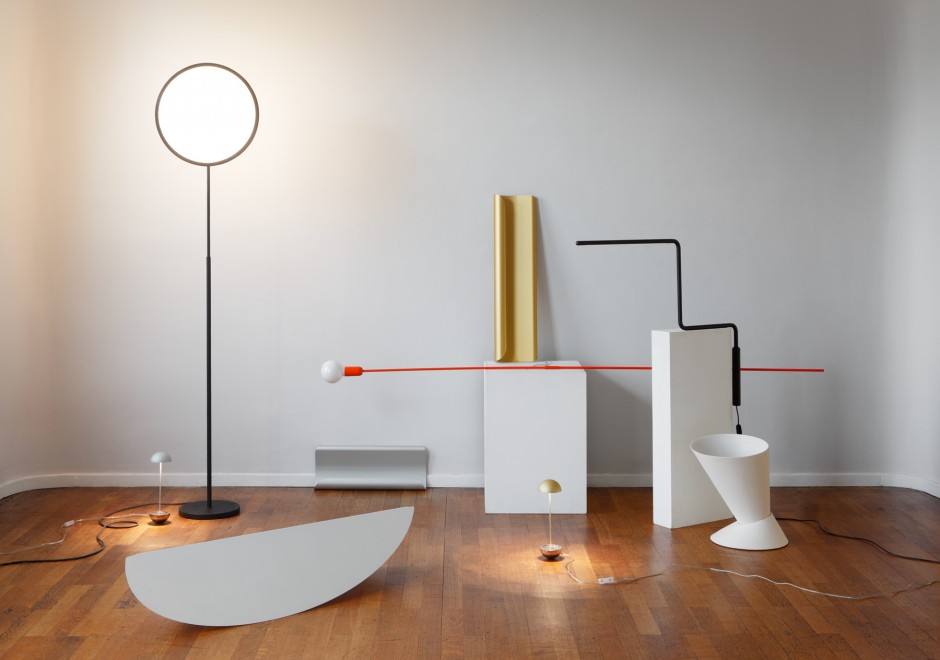Nathalie Dewez
Belgium is Design – a joint venture between Design Flanders, Wallonia-Brussels Design Mode, MAD Brussels, Wallonia Invest & Export and Brussels Invest & Export – will once again highlight Belgian creativity during the Salone in Milan.
To celebrate the 10th anniversary of the Designer of the Year Award, all previous and current designers of the year present their latest designs in a joint expo. Confronting the Masters will highlight the specific characteristics of Belgian design, emphasising the original approach these 10 designers have in common. The prestigious Academia di Belle Arti di Brera is the perfect location to confront these designers with each other, and with the rich historic background of the building itself.
One of the designers is Nathalie Dewez, designer of the year 2011.
1. How would you describe what you do?
I design products and spaces, and products in spaces, with a special focus on light.
I love to work on different scales, combining both products and entire projects. In this equation I include the light itself as well as the solid structure that emits the light. For me both the solid and non-solid form are elements of the dimensions I play with.
Light can be emitted from a small object and create a monumental installation and vice versa. At the end, though, function is critical in all my work. The end product has to satisfy the functional goals by using the solid form in magnifying the light, and this can be done at any scale.
2. At what time do you start your day and what’s the thing you do first?
My days are always different and this is one thing I like about my job.
I work in my studio in Brussels, but I can also work from anywhere else: the design process follows you around all the time. Sometimes the moment when you’ll find the solution you are looking for for days, is not at all when you’re seated at your desk! Connections and ideas can appear in more relaxed moments: while cooking, driving or even in your bed during this precious moment between sleep and awakening.
For the production of the projects, you work in the factories or studio where the pieces are made, but also on the telephone, in your car, while traveling… Today with our ‘super connexion’ to the world, work is not confined to a fixed office but follows you everywhere and I quite like that.
3. What is the reason you started doing what you do? What makes you so passionate about it?
I studied Interior Architecture in Brussels, at school we were working on space as well as on products. In 2000 – my fifth and last year – I could choose my subject and I decided to design a lamp. It was my first lamp, but definitely not my last.
Light is something that really influences our lives, our mood, our behaviour. When you enter a space you will behave very differently if you have a light source in front of you, focused on you than if it is indirectly focused on the ceiling. This relationship between light and space is very interesting for me.
Often, when I enter a public place like a restaurant or a bar, I will know if I will be comfortable there or not the minute I cross the door. Bad light can ruin my evening but it can also change it in a very good way.
Light and lamps have something magical as they have two lives: during the day the object is not used, while in the evening, when lit up, the lamp transforms itself and transforms the space around it.
I think it is really important to consider the formal aspect of the product as much as its functional aspect. Some desk lamps can be really efficient but so ugly that when it is not used you nearly want to hide it. I would rather try to design the product as a 3D volume that is confronted with the space and with us, more as a sculpture.
4. What or who is your source of inspiration?
My grand-father was a painter, and he also made sculptures, jewellery, furniture (for his home only), drawings, … My grandmother and him were probably the ones who made me see the things that surrounded me in a different way.
Once when I was in the cellar with my grandmother, she gave me a big ceramic isolator that was coming from a public electricity pole – I don’t know what the term is for this piece – that she probably found in the street, and I remember her telling me « isn’t it beautiful? ». They learned me to see beauty in unexpected places and this naturally influenced my work later on.
Actually I don’t really have design-related sources of inspiration: Calder, Elsworth Kelly, Panamarenko, Donald Judd, Dan Flavin, Takis, Buren, James Turrell, Yves Klein, Sol Le Witt, … Sculptors in general are very inspiring, and so is nature, and plenty of other things. I have lots of influences, but only few from design actually.
5. Which is your all time favorite design?
Hard to say… so many things I love!
6. Do you think you’ll keep walking down this path in the future or do you have other creative calls?
I will definitely, as my work can go from small products to big installations, including different materials, different contexts … I can find enough variety to not ever get tired of it!
7. Which piece of work would you consider your very own masterpiece?
I don’t really have a favorite project, I have to say. Each time I finish one, that one becomes my favorite. Until the next new project is finished off course.
A project I really enjoyed doing however, was the design I made for the MUDAM Museum in 2011. It was an honor to design a lamp for such a prestigious and beautiful place, and it was a pleasure to work on it.
The Mudam contacted me in 2009 as they wanted new lamps for the big hall of the museum. The big hall has a huge glass roof and they wanted a lamp that was quite flexible in its position and in its lighting proposal.
The hall is the highest exhibition room of the museum and sometimes they have very big sculptures here, so the lamp needs to be pulled up. At other times, for events for example, the lamp can be more present in the hall, so it can hang lower. They also wanted different intensity of light.
To solve these issues, I proposed this big Balance lamp, made of inflatable lightings. With the glass roof we were not able to hang a very heavy fixture and thanks to the inflates I could also keep visual lightness by making a sphere of 3 meters of diameter without any building structure, quite translucent.
I worked with 3 different spheres, each of them had a specific fabric around them to work with the transparency during the day with daylight and during the night with the artificial light that the central sphere produced. There is also a possibility to dismantle the big sphere from the axe and counterweight to only keep the sphere and then lodging it in the toppoint of the glass roof. One of the main challenges of this project was to make an object that sometimes had to be at the center of the space and sometimes had to nearly disappear.
The collaborations were also great on this project: I used fabric that’s usually used for underwear (very resistant, great colors, interesting transparency) from a Belgian firm, and I also worked with a French firm based in Grenoble who made the inflates and sewed the fabric on the spheres, and eventually with an independent who makes theatre sets and who developed the engine to pull up the whole mobile.
8. If you had a time machine, in what year would you be living?
Now is not so bad, let’s see how it will evolve!
9. Cookies and milk, or chips and soda?
Cookies & milk definitely !
10. If you could give yourself one single piece of advice before you started this adventure, what would it be?
One very important and unique point : the more personal you are in your work, the more universal you will be .






